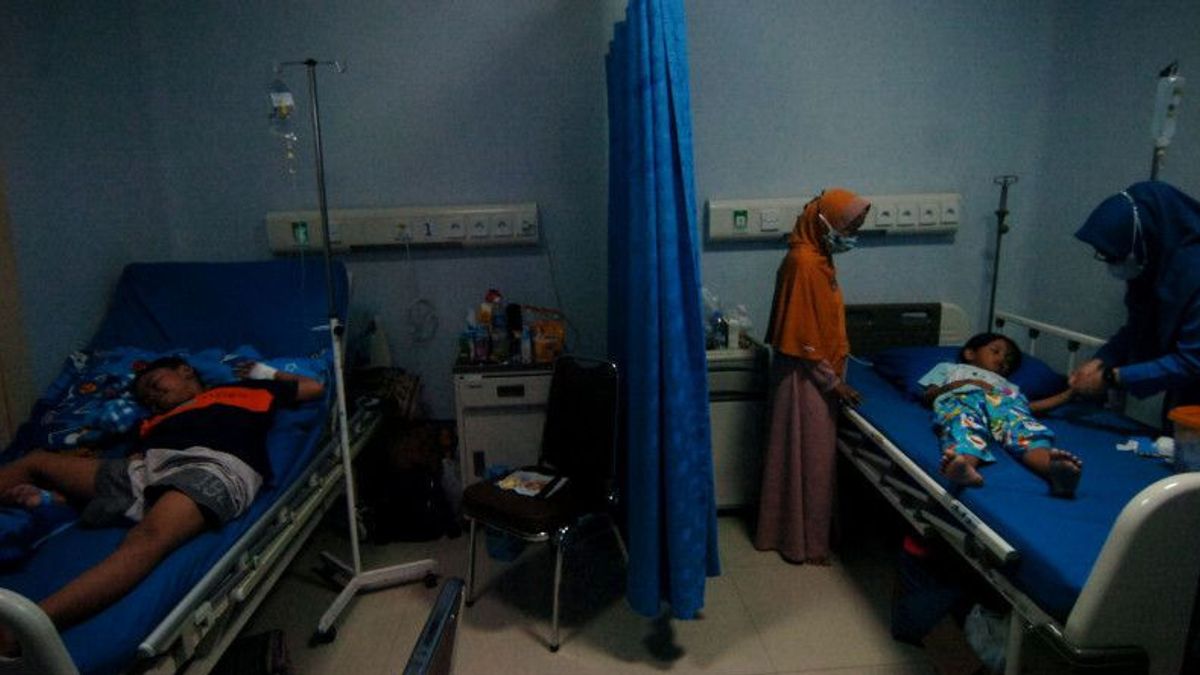JAKARTA - Patients infected with dengue who have congenital or comorbid diseases as well as patients who are still infants must be hospitalized at a health facility even though they do not show any danger signs in order to prevent their health from deteriorating.
"Dengue patients with comorbidities and those who are still infants must be careful, similar to COVID-19 because this group when exposed to dengue can be severe," said the Head of the Coordination Work Unit for Tropical Infections & Diseases - Indonesian Pediatrician Association (IDAI) Dr. dr. Anggraini Alam, Sp. A(K) in the media discussion “Protection of Families from Dangers of Dengue Hemorrhagic Fever”, Wednesday 20 July.
Anggraini explained that dengue is a dynamic disease where the condition of 1 in 20 patients with infection can continue to be severe and even life-threatening. Dengue patients who do not show dangerous symptoms can change their condition to get worse, namely in infants and patients who have comorbid factors.
Danger signs in dengue include severe abdominal pain, persistent vomiting, mucosal bleeding, accumulation of cystic fluid, and also lethargy. If that happens, immediately take the patient to a health facility for hospitalization so that his condition improves.
This also applies to infant patients and people who have congenital diseases such as diabetes mellitus, congenital heart disease, chronic lung disease, chronic lung disorders, chronic liver disorders, hemolytic disease, and kidney failure even though they do not show danger signs.
Anggraini added, people with certain social conditions, such as people who live alone without anyone to help monitor their condition, should choose to be hospitalized when infected with dengue.
Baca juga:
By going to a health facility, health workers can decide which treatment is the best.
Patients who do not experience danger signs can continue to be outpatients, while patients with danger signs or have conditions such as heavy bleeding and severe organ failure will qualify for hospitalization.
The initial symptoms of dengue disease are headache, sudden high fever, pain when moving the eyeballs, vomiting, body feels weak and lethargic, red spots appearing on the skin, and sometimes accompanied by nosebleeds and stools mixed with blood.
The government has targeted to reduce the incidence of dengue to less than 10 per 100,000 population by 2024 and zero cases of dengue death by 2030.
To achieve this target, the government made various efforts, including: strengthening the surveillance system and extraordinary event management, strengthening comprehensive management, increasing participation from community independence, increasing commitment from the central and regional governments as well as the participation of partners and multi-sectors, and develop research studies and innovations for the determination of dengue control policies in the future.
“We are optimistic that Dengue can be controlled and the incidence and mortality can be significantly reduced. This can certainly be achieved if all people from various sectors participate in dengue prevention starting from their respective environments," said the Director General of Disease Prevention and Control at the Ministry of Health, Dr. dr. Maxi Rein Rondonuwu, DHSM., MARS,.
The English, Chinese, Japanese, Arabic, and French versions are automatically generated by the AI. So there may still be inaccuracies in translating, please always see Indonesian as our main language. (system supported by DigitalSiber.id)













